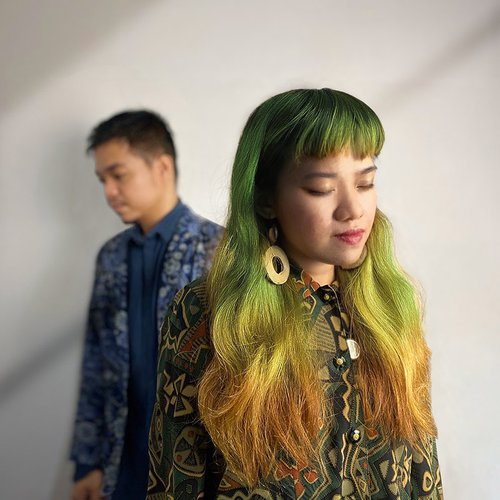⌾ LISTEN TO HACHIREN BY CHIHIRO ONO ⌾
A bell rings three times, announcing the apparition of Chihiro Ono’s suite. Ono, a violinist and violist born in Chiba, Japan, but now living in London, based these four short movements chiefly on the music (and life) of pianist and composer Rentaro Taki. She calls it "super Romantico Classical music" not classical nor experimental, and certainly not pop.
Born in 1979, Taki attentended Leipzig Conservatory in 1901 as the third Japanese musician to study in Europe. He was diagnosed with tuberculosis and travelled back to Oita, Japan in 1902, where he died in 1903. He is perhaps most famous for ‘Kojo no Tsuki’ (Ruined Castle by Moonlight) appropriately inspired by the ruins of Oka Castle in Oita, and with lyrics penned by poet Bansui Doi (1871-1952). "His musical life had many Western influences, yet he never lost the strong core of his nation in his heart, which I can relate to," says Ono. "Doi’s words and Rentarou’s music resonate strongly with me."
‘Kojo no Tsuki’ is fairly well known and has been given renditions throughout the years. For one example, it was jazzed up (literally), albeit without its title, by Theolonius Monk as ‘Japanese Folk Song’.
It’s Taki’s song that works its way through Chihiro Ono’s HachiRen, particularly in ‘Kojo’ (Ruined castle), strings crooning smooth in lament, harsh chords scrape into the air, the whisper of the bow falling silent. That whispering, like a dry brush stroke, flecks of sound colour against the void, feel characteristic of the suite as a whole, particularly in final track ‘Ren’ — a poignant, if melancholic, reflection on mujō (無常) or impermanence, and a fitting coda to the all-too-short life of Rentaro Taki himself.
Violin is the main component of the suite, of course, but that doesn’t stop other elements from making an appearance. What sounds like a steam locomotive appears in ‘8 (Hachi)’ — the first movement, signifying Taki’s summertime birth (24th August); strings appear ghostly and agitated, taking inspiration from Niccolò Paganini’s turbulent playing. Japan’s summers are humid and stifling, the air so crammed with the untethered scream of cicadas that it feels the sky could break open, and worthy of the addled sound Ono has portrayed them with.
On the subject of summer and Paganini (sort of: “La Campanella”) are the bells. In Japan, their clear sound is supposed to inspire cooling thoughts during the heat of summer. At the same time, fūrin (most often glass wind chimes) are symbolic of keeping evil at bay. With HachiRen concerned mostly with ghosts — of Taki, of Oka Castle, and even in the analogical “death” of cherry blossom falling to the ground in pale pink whirlwinds (in ‘SakuraFubuki’) — it makes sense that chimes punctuate the suite, marking a delicate boundary between inspiration, memory, intangible things, and the music itself.
📠
☟ Chihiro Ono Internet Presence ☟
bandcamp ⚘
official site ⚘
twitter













